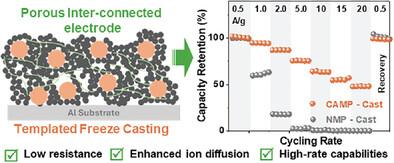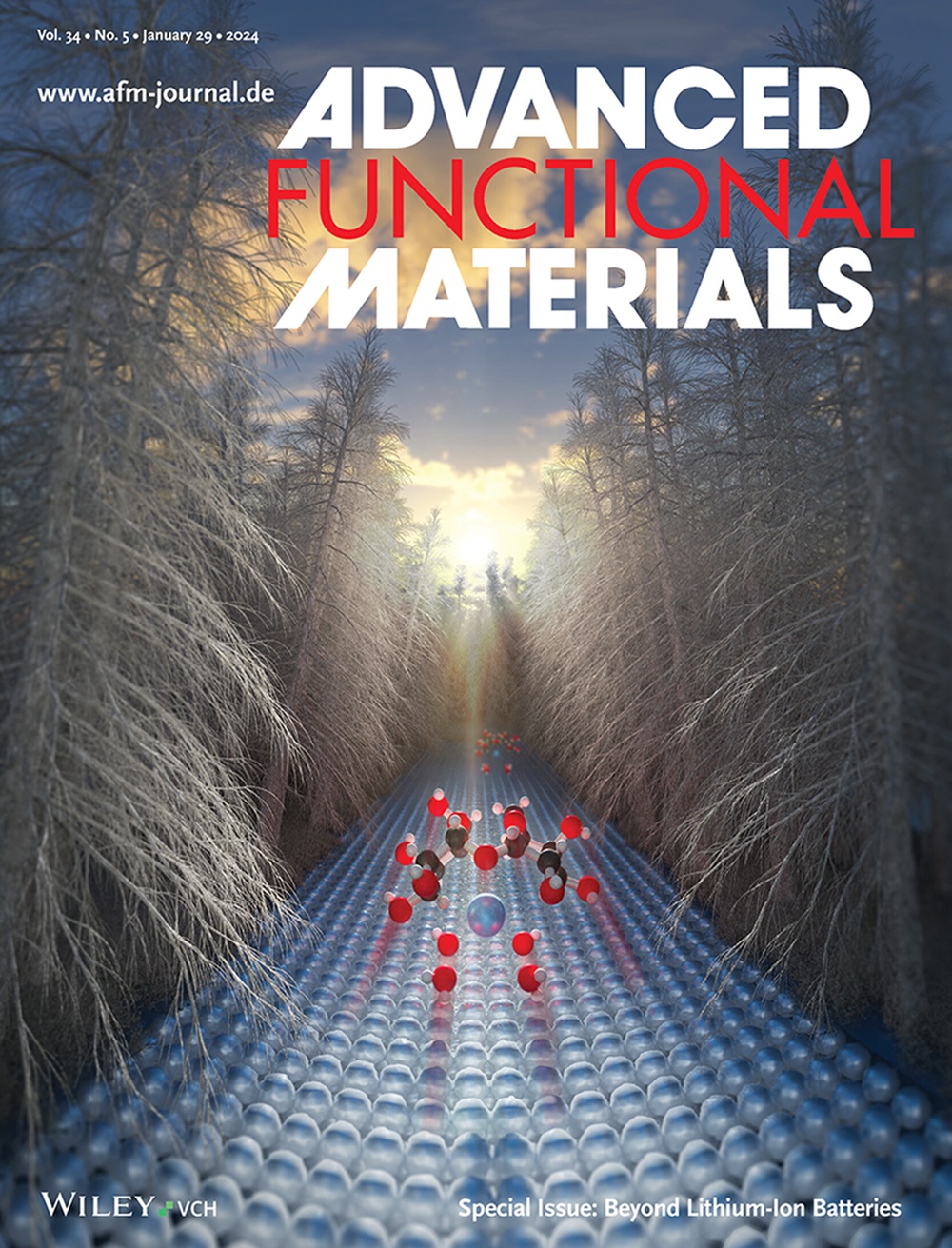Templated Freeze‐Casting for Porous Organic Battery Electrodes with High‐Rate Capabilities
IF 18.5
1区 材料科学
Q1 CHEMISTRY, MULTIDISCIPLINARY
引用次数: 0
Abstract
Redox‐active polymer (RAP)‐based organic electrodes offer versatile energy storage solutions across various battery systems. However, effective dispersion of polymer active materials with conductive additives remains challenging, limiting active site accessibility and material utilization. This study introduces camphene (CAMP), a bio‐derived solvent, to fabricate porous organic electrodes through templated freeze casting. Compared to conventional N‐methyl‐2‐pyrrolidone (NMP)‐cast electrodes, CAMP‐cast electrodes exhibit superior ion diffusion, lower charge transfer resistance, and enhanced reaction kinetics across three different RAPs. This results in excellent rate capabilities and significant capacity retention even at 20 A g

求助全文
约1分钟内获得全文
求助全文
来源期刊

Advanced Functional Materials
工程技术-材料科学:综合
CiteScore
29.50
自引率
4.20%
发文量
2086
审稿时长
2.1 months
期刊介绍:
Firmly established as a top-tier materials science journal, Advanced Functional Materials reports breakthrough research in all aspects of materials science, including nanotechnology, chemistry, physics, and biology every week.
Advanced Functional Materials is known for its rapid and fair peer review, quality content, and high impact, making it the first choice of the international materials science community.
 求助内容:
求助内容: 应助结果提醒方式:
应助结果提醒方式:


